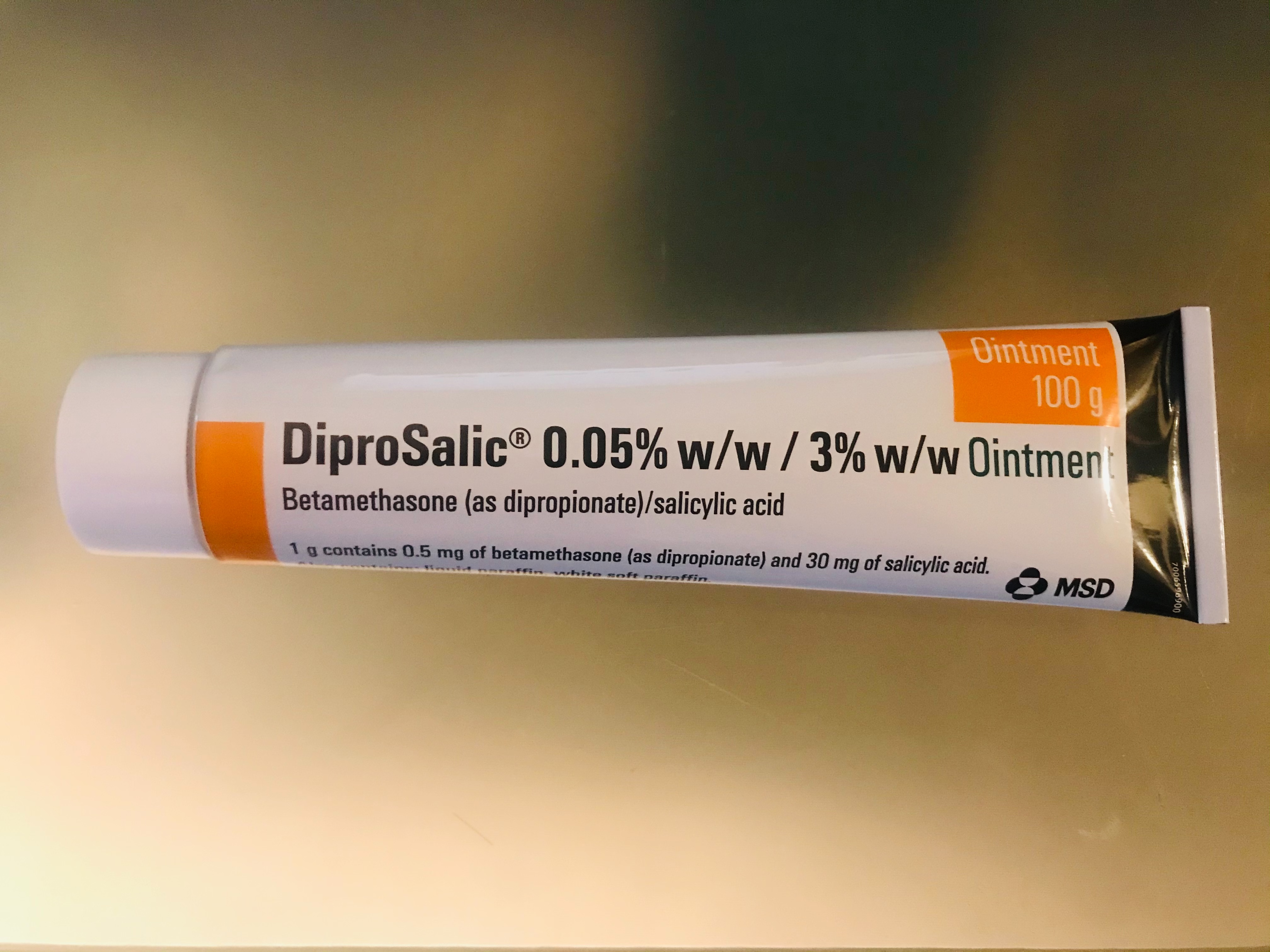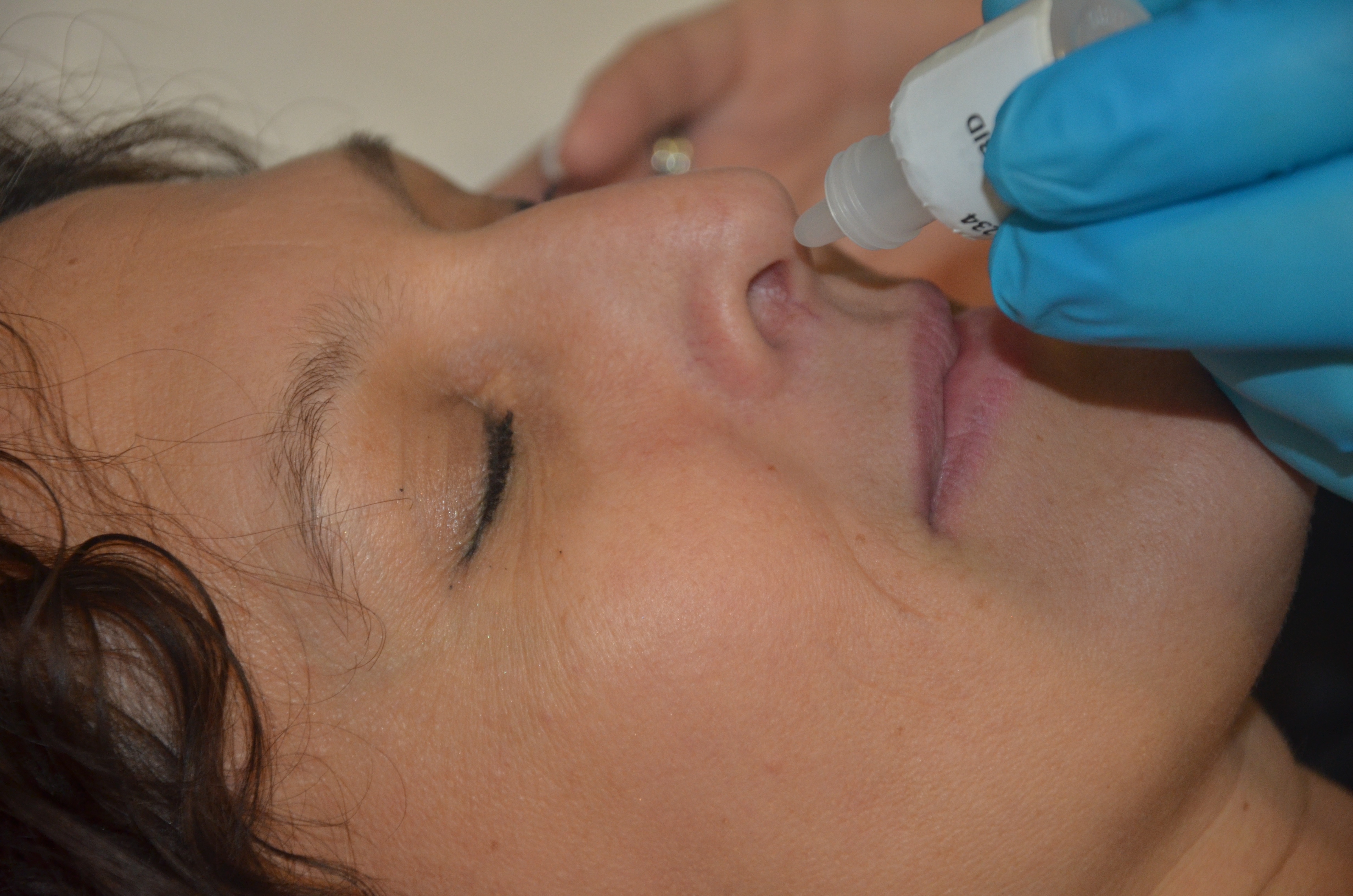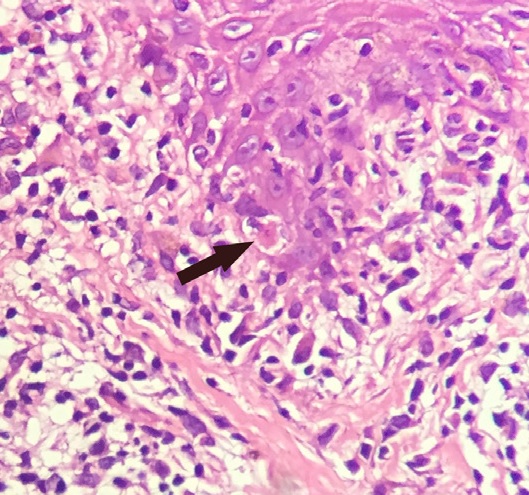|
Calcipotriol
Calcipotriol, also known as calcipotriene and sold under the brand name Dovonex among others, is a synthetic derivative of calcitriol, a form of vitamin D. It is used in the treatment of psoriasis. It was patented in 1985 and approved for medical use in 1991. It is on the World Health Organization's List of Essential Medicines. Calcipotriol is also available with the synthetic corticosteroid betamethasone dipropionate as the fixed-dose combination medication calcipotriol/betamethasone dipropionate for the treatment of plaque psoriasis. Medical uses Chronic plaque psoriasis is the chief medical use of calcipotriol. It has also been used successfully in the treatment of alopecia areata. Contraindications Hypersensitivity, use on face, hypercalcaemia, or evidence of vitamin D toxicity are the only contraindications for calcipotriol use. Cautions include exposure to excessive natural or artificial light, due to the potential for calcipotriol to cause photosensitivity. Adve ... [...More Info...] [...Related Items...] OR: [Wikipedia] [Google] [Baidu] |
Calcipotriol/betamethasone Dipropionate
Calcipotriol/betamethasone dipropionate, sold under the brand name Taclonex among others, is a fixed-dose combination medication of the synthetic vitamin D3 analog calcipotriol (also known as calcipotriene) and the synthetic corticosteroid betamethasone dipropionate for the treatment of plaque psoriasis. It is used in the form of ointment, topical suspension, gel, aerosol, and foam. It is available as a generic medication. Medical uses Calcipotriol/betamethasone dipropionate (Cal/BD) is a topical medication for the treatment of trunk, limb, and scalp plaque psoriasis. This medication is available in ointment, gel, aerosol, or foam, formulations. The ointment formulation was FDA approved in 2004, and is indicated for the once daily topical treatment of plaque-type psoriasis vulgaris amenable to topical therapy.Daivobet 50/500 ointment package insert 29 April 2011 The foam formulation was approved by the FDA in 2015, and is indicated for the topical treatment of plaque psoria ... [...More Info...] [...Related Items...] OR: [Wikipedia] [Google] [Baidu] |
Plaque Psoriasis
Psoriasis is a long-lasting, noncontagious autoimmune disease characterized by patches of abnormal skin. These areas are red, pink, or purple, dry, itchy, and scaly. Psoriasis varies in severity from small localized patches to complete body coverage. Injury to the skin can trigger psoriatic skin changes at that spot, which is known as the Koebner phenomenon. The five main types of psoriasis are plaque, guttate, inverse, pustular, and erythrodermic. Plaque psoriasis, also known as psoriasis vulgaris, makes up about 90% of cases. It typically presents as red patches with white scales on top. Areas of the body most commonly affected are the back of the forearms, shins, navel area, and scalp. Guttate psoriasis has drop-shaped lesions. Pustular psoriasis presents as small, noninfectious, pus-filled blisters. Inverse psoriasis forms red patches in skin folds. Erythrodermic psoriasis occurs when the rash becomes very widespread and can develop from any of the other types. ... [...More Info...] [...Related Items...] OR: [Wikipedia] [Google] [Baidu] |
Calcitriol
Calcitriol is a hormone and the active form of vitamin D, normally made in the kidney. It is also known as 1,25-dihydroxycholecalciferol. It binds to and activates the vitamin D receptor in the nucleus of the cell, which then increases the expression of many genes. Calcitriol increases blood Calcium in biology, calcium mainly by increasing the uptake of calcium from the intestines. It can be given as a medication for the treatment of hypocalcemia, low blood calcium and hyperparathyroidism due to kidney disease, low blood calcium due to hypoparathyroidism, osteoporosis, osteomalacia, and familial hypophosphatemia, and can be taken by mouth or by intravenous, injection into a vein. Excessive amounts or intake can result in weakness, headache, nausea, constipation, urinary tract infections, and abdominal pain. Serious side effects may include high blood calcium and anaphylaxis. Calcitriol was identified as the active form of vitamin D in 1971 and the drug was approved for medic ... [...More Info...] [...Related Items...] OR: [Wikipedia] [Google] [Baidu] |
Betamethasone Dipropionate
Betamethasone dipropionate is a glucocorticoid steroid with anti-inflammatory and immunosuppressive properties. It is applied as a topical cream, ointment, lotion or gel (Diprolene) to treat itching and other skin conditions such as eczema. Minor side effects include dry skin and mild, temporary stinging when applied. Betamethasone dipropionate is a "super high potency" corticosteroid used to treat inflammatory skin conditions such as dermatitis, eczema and psoriasis. It is a synthetic analog of the adrenal corticosteroids. Although its exact mechanism of action is not known, it is effective when applied topically to cortico-responsive inflammatory dermatoses. It is available as a generic medication. Adverse effects Although the absorption of betamethasone dipropionate is small, when used for prolonged periods of time (periods exceeding two weeks), or across a large surface area (total use greater than 50 grams per week), it can have adverse effects. One such effect is the ability ... [...More Info...] [...Related Items...] OR: [Wikipedia] [Google] [Baidu] |
Topical Administration
A topical medication is a medication that is applied to a particular place on or in the body. Most often topical medication means application to body surfaces such as the skin or mucous membranes to treat ailments via a large range of classes including creams, foams, gels, lotions, and ointments. Many topical medications are epicutaneous, meaning that they are applied directly to the skin. Topical medications may also be inhalational, such as asthma medications, or applied to the surface of tissues other than the skin, such as eye drops applied to the conjunctiva, or ear drops placed in the ear, or medications applied to the surface of a tooth. The word ''topical'' derives from Greek τοπικός ''topikos'', "of a place". Justification Topical drug delivery is a route of administering drugs via the skin to provide topical therapeutic effects. As skin is one of the largest and most superficial organs in the human body, pharmacists utilise it to deliver various drugs. ... [...More Info...] [...Related Items...] OR: [Wikipedia] [Google] [Baidu] |
T Cell
T cells (also known as T lymphocytes) are an important part of the immune system and play a central role in the adaptive immune response. T cells can be distinguished from other lymphocytes by the presence of a T-cell receptor (TCR) on their cell surface receptor, cell surface. T cells are born from hematopoietic stem cells, found in the bone marrow. Developing T cells then migrate to the thymus gland to develop (or mature). T cells derive their name from the thymus. After migration to the thymus, the precursor cells mature into several distinct types of T cells. T cell differentiation also continues after they have left the thymus. Groups of specific, differentiated T cell subtypes have a variety of important functions in controlling and shaping the immune response. One of these functions is immune-mediated cell death, and it is carried out by two major subtypes: Cytotoxic T cell, CD8+ "killer" (cytotoxic) and T helper cell, CD4+ "helper" T cells. (These are named for the presen ... [...More Info...] [...Related Items...] OR: [Wikipedia] [Google] [Baidu] |
Thymic Stromal Lymphopoietin
Thymic stromal lymphopoietin (TSLP) is an interleukin (IL)-2-like cytokine, alarmin, and growth factor involved in numerous physiological and pathological processes, primarily those of the immune system. It shares a common ancestor with IL-7. Originally appreciated for its role in immune cell proliferation and development, and then for its pivotal role in type 2 immune responses, TSLP is now known to be involved in other types of immune responses, autoimmune disease, and certain cancers. Discovery As the name suggests, TSLP was initially discovered as a growth factor derived from the supernatant of a mouse thymic stromal cell line that was found to promote the survival and proliferation of B lymphocytes. Gene TSLP production has been observed in numerous species, including humans and mice. In humans, TSLP is encoded by the ''TSLP'' gene. Alternative splicing of ''TSLP'' results in two transcript variants, a long form (lfTSLP, or just TSLP) consisting of 159 am ... [...More Info...] [...Related Items...] OR: [Wikipedia] [Google] [Baidu] |
Keratinocyte
Keratinocytes are the primary type of cell found in the epidermis, the outermost layer of the skin. In humans, they constitute 90% of epidermal skin cells. Basal cells in the basal layer (''stratum basale'') of the skin are sometimes referred to as basal keratinocytes. Keratinocytes form a barrier against environmental damage by heat, UV radiation, water loss, pathogenic bacteria, fungi, parasites, and viruses. A number of structural proteins, enzymes, lipids, and antimicrobial peptides contribute to maintain the important barrier function of the skin. Keratinocytes differentiate from epidermal stem cells in the lower part of the epidermis and migrate towards the surface, finally becoming corneocytes and eventually being shed, which happens every 40 to 56 days in humans. Function The primary function of keratinocytes is the formation of a barrier against environmental damage by heat, UV radiation, dehydration, pathogenic bacteria, fungi, parasites, and viruses. Pathoge ... [...More Info...] [...Related Items...] OR: [Wikipedia] [Google] [Baidu] |
Atopic Dermatitis
Atopic dermatitis (AD), also known as atopic eczema, is a long-term type of inflammation of the skin. Atopic dermatitis is also often called simply eczema but the same term is also used to refer to dermatitis, the larger group of skin conditions. Atopic dermatitis results in puritis, itchy, red, swollen, and cracked skin. Clear fluid may come from the affected areas, which can thicken over time. Atopic dermatitis affects about 20% of people at some point in their lives. It is more common in younger children. Females are affected slightly more often than males. Many people outgrow the condition. While the condition may occur at any age, it typically starts in childhood, with changing severity over the years. In children under one year of age, the face and limbs and much of the body may be affected. As children get older, the areas on the insides of the knees and folds of the elbows and around the neck are most commonly affected. In adults, the hands and feet are commonly affec ... [...More Info...] [...Related Items...] OR: [Wikipedia] [Google] [Baidu] |
Coactivation (Transcription)
A coactivator is a type of transcriptional coregulator that binds to an activator (a transcription factor) to increase the rate of transcription of a gene or set of genes. The activator contains a DNA binding domain that binds either to a DNA promoter site or a specific DNA regulatory sequence called an enhancer. Binding of the activator-coactivator complex increases the speed of transcription by recruiting general transcription machinery to the promoter, therefore increasing gene expression. The use of activators and coactivators allows for highly specific expression of certain genes depending on cell type and developmental stage. Some coactivators also have histone acetyltransferase (HAT) activity. HATs form large multiprotein complexes that weaken the association of histones to DNA by acetylating the N-terminal histone tail. This provides more space for the transcription machinery to bind to the promoter, therefore increasing gene expression. Activators are found in all ... [...More Info...] [...Related Items...] OR: [Wikipedia] [Google] [Baidu] |
Calcitriol Receptor
The vitamin D receptor (VDR also known as the calcitriol receptor) is a member of the nuclear receptor family of transcription factors. Calcitriol (the active form of vitamin D, 1,25-(OH)2vitamin D3) binds to VDR, which then forms a heterodimer with the retinoid-X receptor. The VDR heterodimer then enters the nucleus and binds to Vitamin D responsive elements (VDRE) in genomic DNA. VDR binding results in expression or transrepression of many specific gene products. VDR is also involved in microRNA-directed post transcriptional mechanisms. In humans, the vitamin D receptor is encoded by the ''VDR'' gene located on chromosome 12q13.11. VDR is expressed in most tissues of the body, and regulates transcription of genes involved in intestinal and renal transport of calcium and other minerals. Glucocorticoids decrease VDR expression. Many types of immune cells also express VDR. Function The VDR gene encodes the nuclear hormone receptor for vitamin D. The most potent natural ag ... [...More Info...] [...Related Items...] OR: [Wikipedia] [Google] [Baidu] |






